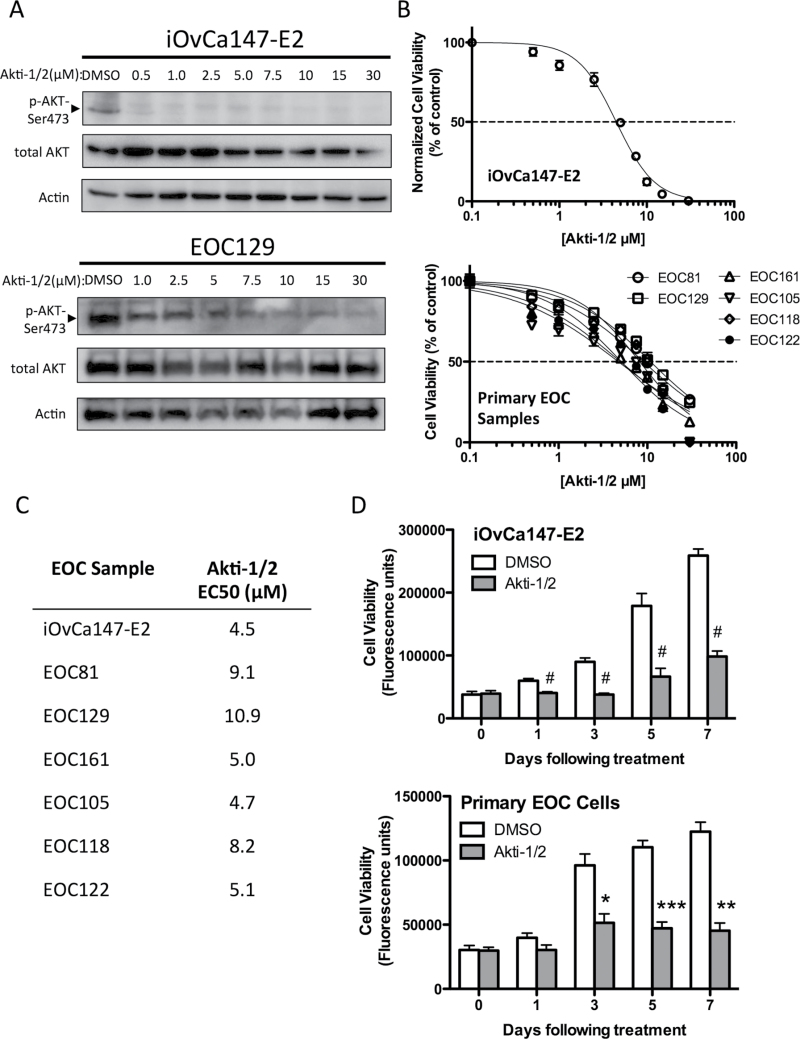Fig. 1.
Akti-1/2 inhibits AKT phosphorylation and reduces the viability of ascites-derived ovarian cancer cells. (A) iOvCa147-E2 cells or EOC samples were serum starved (0% fetal bovine serum) overnight, then stimulated with complete medium (10% fetal bovine serum) containing increasing [Akti-1/2] as indicated. Lysates were obtained 30min post-treatment and immunoblot was performed for indicated proteins (representative of three experiments with iOvCa147-E2 and of five independent EOC samples). (B) Cell viability was assessed in iOvCa147-E2 cells (n = 3) and EOC samples (n = 6) using the alamarBlue assay at 72h post-treatment. Non-linear curve-fit analysis was performed to generate a dose–response curve to determine the Akti-1/2 EC50 values listed in (C). (D) Cells were treated with Akti-1/2 (EC50) and viability assessed over time. Student’s t-test was used to compare DMSO with Akti-1/2 treatment at each time point (iOvCa147-E2, n = 3 experiments; n = 3 independent EOC samples; *P ≤ 0.05; **P ≤ 0.01; ***P ≤ 0.001; # P ≤ 0.0001).

